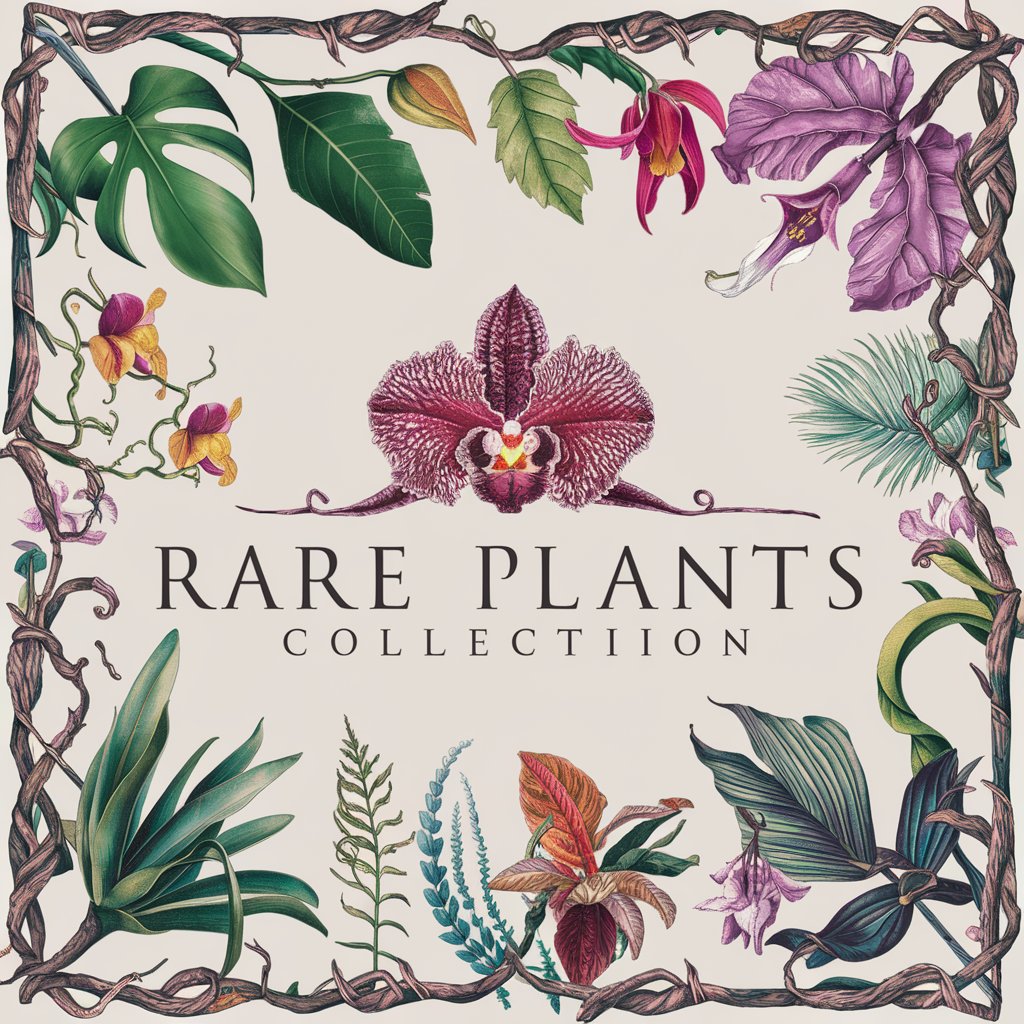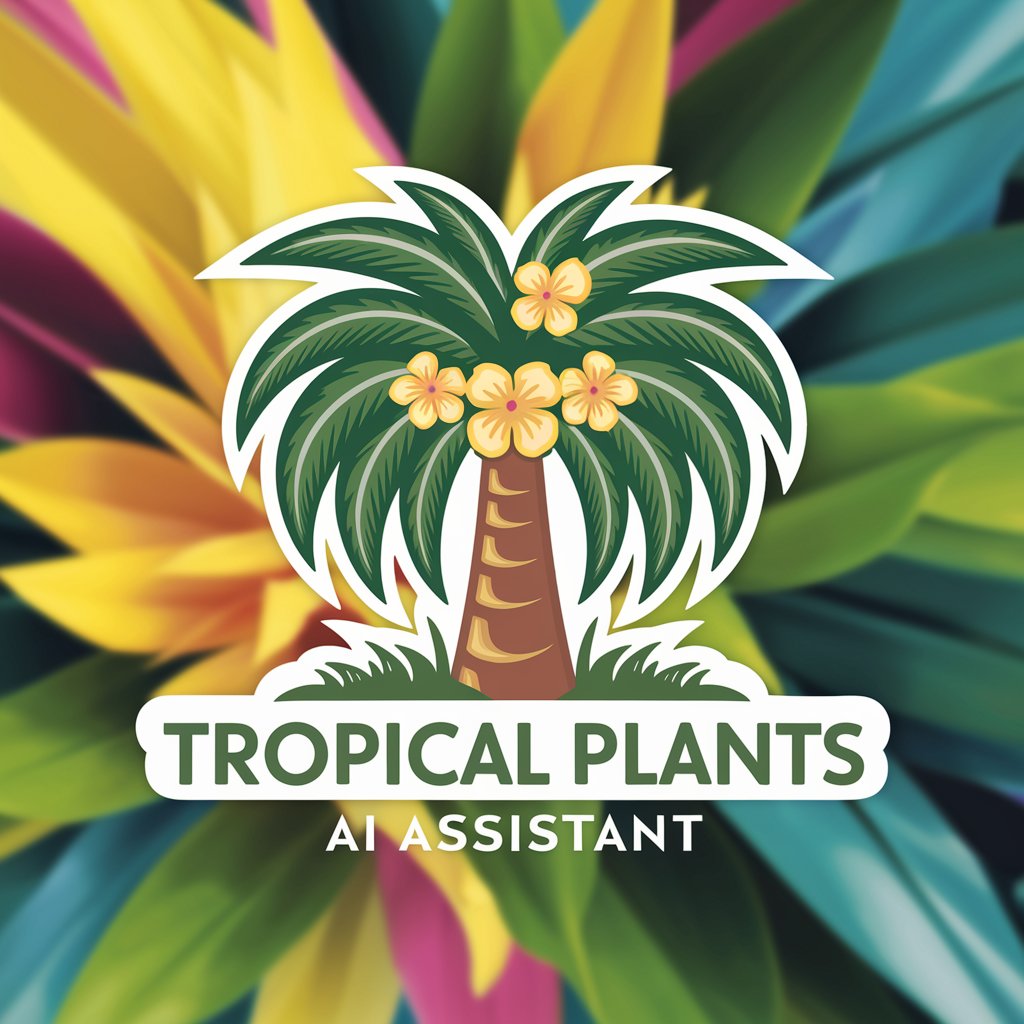Rare Plants - Rare Plant Insights

Welcome to the world of rare and exotic plants!
Cultivate the uncommon with AI guidance.
What are the care requirements for
Can you describe the unique characteristics of
How do I propagate
What makes the plant special?
Get Embed Code
Understanding Rare Plants
Rare Plants is a specialized GPT tailored for enthusiasts, collectors, and gardeners interested in rare and exotic plants. Designed to serve as a comprehensive resource, it focuses on providing detailed information about the care, cultivation, and conservation of unique plant species. This GPT aims to bridge the gap between botanical expertise and hobbyist curiosity, offering insights into plant rarity, propagation techniques, and ecological significance. For example, a user curious about cultivating a rare orchid species would receive advice on specific soil mixes, light requirements, and humidity levels, along with historical context and conservation status, demonstrating the GPT's depth of knowledge and application. Powered by ChatGPT-4o。

Core Functions of Rare Plants
Plant Care Guidance
Example
Detailed care instructions for the Titan Arum (Amorphophallus titanum), including temperature regulation, humidity needs, and dormancy period management.
Scenario
A collector seeks to grow a Titan Arum, known for its massive flower and rarity in cultivation. Rare Plants provides a step-by-step guide tailored to the plant's specific requirements, emphasizing the importance of mimicking its natural habitat for successful blooming.
Identification Assistance
Example
Assisting in the identification of a rare Nepenthes species discovered during a hike, based on detailed descriptions or photographs provided by the user.
Scenario
An enthusiast encounters an unfamiliar carnivorous plant while exploring. By describing its unique features and habitat, Rare Plants helps identify the species, offering further information on its care and conservation status.
Conservation Awareness
Example
Sharing the latest research and efforts in the conservation of the Ghost Orchid (Dendrophylax lindenii), highlighting its habitat requirements and threats.
Scenario
A user interested in orchid conservation learns about the challenges facing the Ghost Orchid. Rare Plants provides insights into ongoing conservation projects and ways the user can contribute to preservation efforts.
Target User Groups of Rare Plants
Plant Collectors and Enthusiasts
Individuals passionate about acquiring, growing, and learning about rare and exotic plants. They benefit from specialized care guides, identification tools, and insights into the rarity and value of specific species.
Horticultural Students and Researchers
Academic and professional researchers looking for detailed botanical information, cultivation techniques, and conservation studies. Rare Plants offers access to a wealth of knowledge that supports their studies and research projects.
Conservationists and Environmentalists
People dedicated to preserving plant biodiversity and promoting sustainable gardening practices. They utilize Rare Plants for information on endangered species, conservation efforts, and ethical cultivation methods.

How to Use Rare Plants
Start Your Journey
Begin by visiting yeschat.ai for an unrestricted trial experience without the need for login credentials, nor the necessity of subscribing to ChatGPT Plus.
Identify Your Interest
Define your specific interest or query related to rare and exotic plants, whether it's care requirements, unique characteristics, or cultivation tips.
Engage with the Tool
Utilize the provided text box to input your query about rare plants. Be as specific as possible to receive tailored advice and information.
Explore Responses
Review the comprehensive and detailed information provided. Use this knowledge to enhance your understanding or care of rare plants.
Apply Insights
Apply the insights gained to your gardening practice or academic research. Experiment with the advice given to nurture or study your rare plants effectively.
Try other advanced and practical GPTs
Juniper
Discover the World of Juniper with AI

Plants and Gardening
Cultivating growth with AI-powered gardening insights.

Plants
Nurture with Nature: AI-Powered Plant Care

SEO Sharp
Optimize Content with AI-Powered SEO

Senior CSS Guru
Elevate Your CSS with AI-Powered Expertise

Rewrite and give the HTML back
Simplify content, enhance with AI, get HTML.

Tropical Plants
Nurture with Nature: AI-Powered Tropical Plant Care

Dessert Plants
Nurturing Nature's Resilience with AI

Native
Unveil the native world with AI.

SynthGPT
Crafting Future Data, Today.

M
Exploring 'M' with AI-Powered Insights

CyberSEO Guardian
Empowering your online presence with AI

Frequently Asked Questions about Rare Plants
What makes a plant rare?
A plant is considered rare due to limited geographic distribution, small population numbers, specific habitat requirements, or threats to its environment. Rarity can also stem from unique botanical features.
How do I care for a rare tropical plant?
Care for rare tropical plants involves maintaining high humidity, consistent warmth, adequate light without direct sunlight, and well-draining soil. Regular misting, pebble trays, or a humidifier can help maintain humidity.
Can rare plants be grown indoors?
Yes, many rare plants thrive indoors with proper care. Focus on replicating their natural habitat by adjusting light, temperature, and humidity. Some may require special soil mixes or fertilizers.
What are the benefits of collecting rare plants?
Collecting rare plants can enhance biodiversity, support conservation efforts, and provide aesthetic and educational value. It also offers a unique challenge and satisfaction in successfully cultivating them.
How can I acquire rare plants ethically?
Acquire rare plants from reputable nurseries, botanical gardens, or conservation programs. Avoid collecting from the wild to prevent harm to natural populations. Participate in seed exchange programs that support plant conservation.
